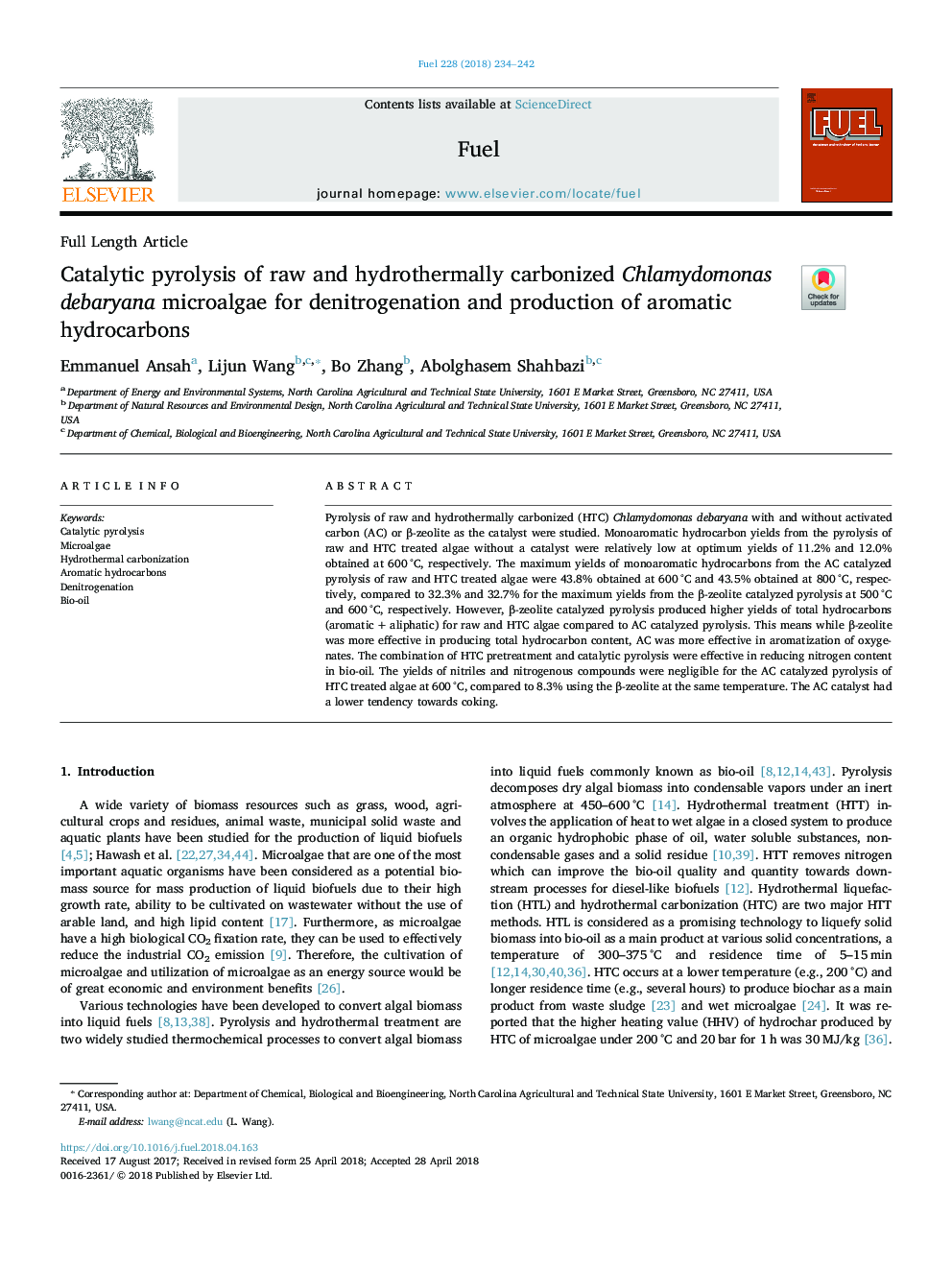| Article ID | Journal | Published Year | Pages | File Type |
|---|---|---|---|---|
| 6630742 | Fuel | 2018 | 9 Pages |
Abstract
Pyrolysis of raw and hydrothermally carbonized (HTC) Chlamydomonas debaryana with and without activated carbon (AC) or β-zeolite as the catalyst were studied. Monoaromatic hydrocarbon yields from the pyrolysis of raw and HTC treated algae without a catalyst were relatively low at optimum yields of 11.2% and 12.0% obtained at 600â¯Â°C, respectively. The maximum yields of monoaromatic hydrocarbons from the AC catalyzed pyrolysis of raw and HTC treated algae were 43.8% obtained at 600â¯Â°C and 43.5% obtained at 800â¯Â°C, respectively, compared to 32.3% and 32.7% for the maximum yields from the β-zeolite catalyzed pyrolysis at 500â¯Â°C and 600â¯Â°C, respectively. However, β-zeolite catalyzed pyrolysis produced higher yields of total hydrocarbons (aromaticâ¯+â¯aliphatic) for raw and HTC algae compared to AC catalyzed pyrolysis. This means while β-zeolite was more effective in producing total hydrocarbon content, AC was more effective in aromatization of oxygenates. The combination of HTC pretreatment and catalytic pyrolysis were effective in reducing nitrogen content in bio-oil. The yields of nitriles and nitrogenous compounds were negligible for the AC catalyzed pyrolysis of HTC treated algae at 600â¯Â°C, compared to 8.3% using the β-zeolite at the same temperature. The AC catalyst had a lower tendency towards coking.
Keywords
Related Topics
Physical Sciences and Engineering
Chemical Engineering
Chemical Engineering (General)
Authors
Emmanuel Ansah, Lijun Wang, Bo Zhang, Abolghasem Shahbazi,
